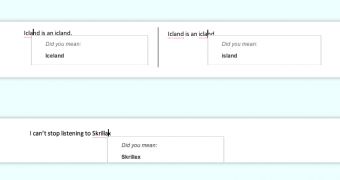Google has confirmed that the web-powered spell checker in Google Docs is real and is for everyone. The feature is now enabled for all users, but only works in English. As expected, the new spell checker is based on the web service and uses context to generate suggestions.
It's a huge improvement over the existing dictionary-based system which was rudimentary at best. Apart from adding context to suggestions, becoming a grammar checker in the process, one big advantage of the web-based checker is that it's always improving.
"One of my early projects at Google was to improve the suggestions that are made when a query is misspelled in Google Search," Yew Jin Lim, a software engineer at Google wrote.
"The neat thing about that system is that it’s adaptive: our suggestions get smarter and smarter based on the words Googlebot sees as it explores the web," he said.
"But search isn’t the only place where I make spelling mistakes! And that got me wondering: could we take this adaptive technology and use it to make spell checking better in other places?," he asked. The answer being the feature introduced today.
Google has a couple of examples where the new feature shines, for example it will be able to correct "Icland is an icland" to "Iceland is an island." Undoubtedly you'll find more by yourself.
But that's the great advantage of using Google Search's engine, it's based on machine learning not on a dictionary. Google indexes billions of web pages and billions upon billions of words, sentences and phrases. With so much data at its disposal, it's going to be easy for it to figure out what's wrong even if the engine doesn't actually know any grammar.
That said, it's far from perfect. It's going to do well with common words and phrases and even uncommon ones as long as you don't stray outside the lines to far. But it will make some rather glaring mistakes from time to time.

 14 DAY TRIAL //
14 DAY TRIAL //